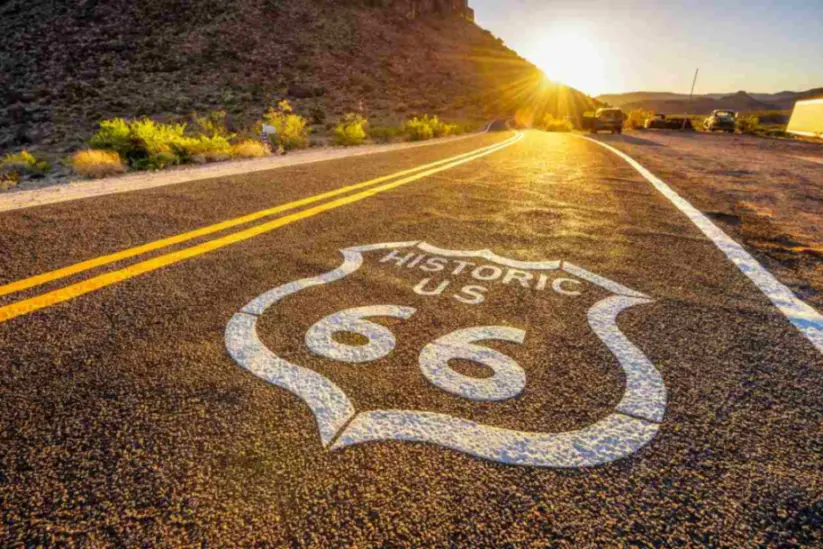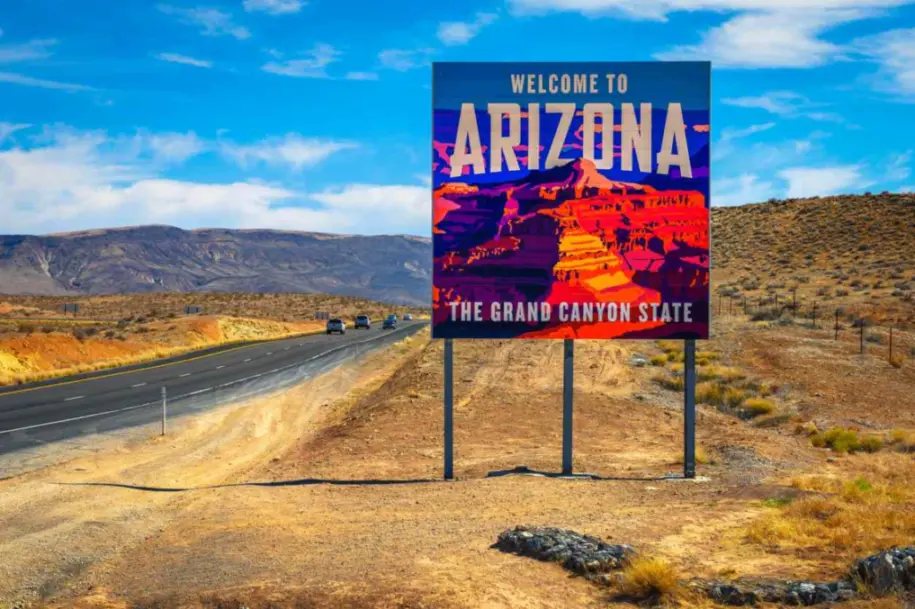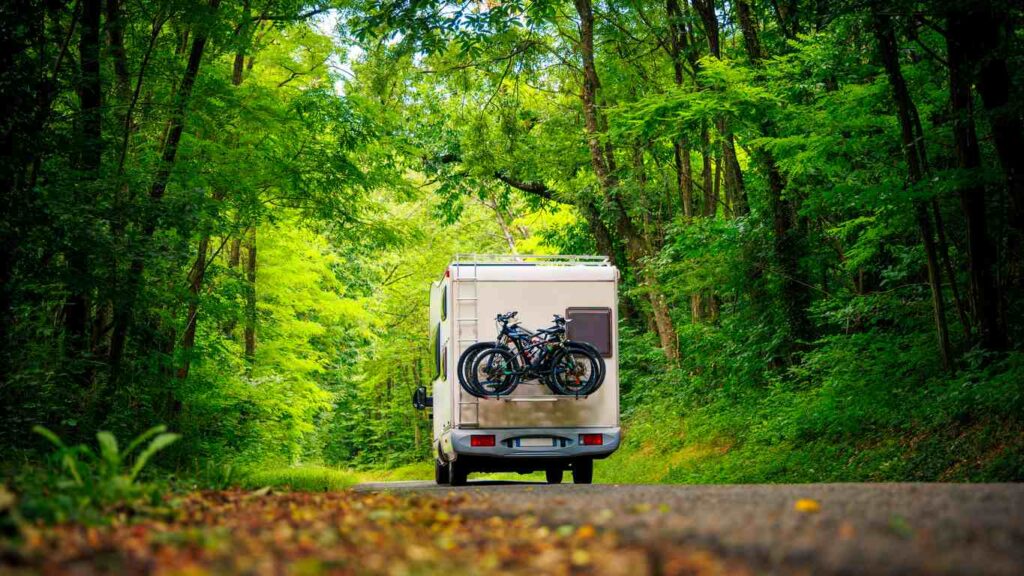Why Snowbirds Love Phoenix and How Storage Makes It Easy

When the weather gets chilly, migratory birds fly south for the winter, and so do people! Snowbirds, as they have come to be known, travel seasonally throughout the American south to enjoy sandy beaches, ample sunshine, and the overall warmer weather and pleasant climate that leaves the northern states in the winter.
If you’re considering becoming a snowbird yourself, or if you’re already part of this seasonal migration, let’s take some time to dig into the history of snowbirding, where they come from, where they go, and how Advantage Storage can make a massive difference in your travel prep and planning.
What is a “Snowbird?”
We’ll start by getting our terms straight. “Snowbird” refers to people who migrate from colder regions to warmer destinations during the winter months. While most snowbirds are retirees, this trend has expanded to include families and individual travelers of all ages seeking comfort in milder climates.
The reasons for traveling vary:
- For some, the warmer weather is easier on the joints, particularly for older individuals, while others simply want to escape harsh winter conditions.
- Some snowbirds suffer from seasonal affective disorder (SAD), which makes winter’s short, cold days challenging to endure.
- Others head south for just a few weeks to spend time with family, particularly around holidays like Christmas.
There’s also a growing group of “sunbirds,” or those who, after experiencing snowbird life, move permanently to warmer climates. Once they get accustomed to the warmth and slower pace of life, many choose to stay year-round, becoming full-time residents.
When Do Snowbirds Come to Arizona?
Snowbirds typically begin arriving in Arizona as early as October, with the peak season occurring from November through March. Most head back north in late spring, around April or May, when the temperatures rise.
A Brief History of Snowbirding

Some trace the snowbird trend back to John D. Rockefeller, who first spent his winters in Ormond Beach, Florida, in 1914. While he may have been an early adopter of the practice, it wasn’t until the 1920s that snowbirding truly began to gain traction. The rise of the affordable automobile and the improvement of road networks made it easier for people to travel long distances south, and millions would in the decades to come.
Route 66 was one of the first highways to connect the central United States to the southwest, gaining a popularity so widespread that it would later become known as the “Mother Road’ and the “Main Street of America.”
Dwight D. Eisenhower’s Interstate Highway system kicked the migration into overdrive. With dozens of new routes stretching coast to coast, all with standardized signage and construction standards, it had never been easier to traverse cross-country. Coupled with the rise of the golden age of air travel in the 1950s, this led to a nationwide surge in travel.
By the 1970s, snowbirds had become such a prominent force in southern communities that they were one of the driving factors behind the real estate booms in Florida, Arizona, and California. And this trend continues through today, with vacation properties making up about 90%-95% of all short-term rentals in Arizona.
How Snowbirds Travel
Traveling south to escape the cold can take many forms, with each snowbird choosing their method of transportation based on budget, destination, and preferred accommodations. By plane, personal vehicle, or RV, the goal is the same: stay warm and stay comfortable.
RVers, Homeowners, and Renting Snowbirds
The majority of snowbirds travel by plane or in their personal vehicles, just like typical vacationers. These travelers often rent or own property, such as a vacation home, condo, or apartment, but that’s not the case for all snowbirds. Some choose to bring their home with them.
RVers, as they’re commonly called, carry everything they need for the winter months in their motorized homes or campers. This offers flexibility to explore more areas during their adventure. Many RVers also take temporary jobs, known as “workamping,” in seasonal roles like campgrounds, lodges, or tourist attractions near their destinations.
Snowbirding by Boat and Rail
Many snowbirds prefer to travel by boat or rail.
The trip down south along accessible waterways is a leisurely, scenic journey for boat owners, and it’s a great way to enjoy some relaxation on the water as you travel along the coastlines.
For snowbirds who prefer locomotives, there’s one service that stands out from the rest: Amtrak’s Auto Train. It’s the only motorail service in the United States, and it is one of the easiest ways to transport both people and vehicles while enjoying a relaxing, effortless ride south.
Legal Status of Snowbirds
The legal status of snowbirds varies depending on their country of origin and their destination.
Many snowbirds come from Canada, with a notable 80,000+ members of the Canadian Snowbird Association helping to advocate for their rights. The legal implications often revolve around healthcare access and the number of days snowbirds can stay in their destination country without needing a visa.
Domestic travel tends to be simpler, but no matter where you are heading, check with your insurance provider about your coverage while abroad and familiarize yourself with local regulations and restrictions on travel, especially if your trip crosses national borders.
Where Are the Best Places in Arizona For Snowbirds?

While the entire state sees a boost in tourism around the start of the winter months, Scottsdale and Sedona are among the most attractive places for snowbirds.
Scottsdale is a common choice for snowbirds looking for a laid-back lifestyle they can enjoy in luxury. Golf courses, resorts, and dozens of fine dining establishments are dotted around every corner to enjoy, but this isn’t every traveler’s cup of tea.
Those drawn to natural beauty know Sedona is the place to be. The iconic red rock formations make for a surreal hiking experience, and there are plenty of places to explore, including these absolutely gorgeous national parks and monuments nearby. While you may still see some snow, the overall winter temperatures are pleasant and near-perfect for camping.
Quartzsite is an RVer Hotspot
Quartzsite has earned its reputation as a top snowbird destination, especially for RVers. Each winter, thousands of RVs roll into the small town.
Known as one of several “white cities” during this period due to the sea of white-topped RVs, much of Quartzsite’s commercial activity in the winter months is driven by these travelers from cooler states.
Where Does it Snow in Arizona?
Outsiders may be surprised to learn that it does snow in Arizona, particularly in the northern regions where the elevation is high. We mentioned that snowfall can occur in Sedona, but other areas like Flagstaff and the Grand Canyon can also regularly experience snow during the Arizona winter months due to their high elevations.
Arizona locals, many of them snowbirds too, often head south to comparatively warmer regions like Texas, California, or even Florida to escape the chill. Regardless of where they come from or where they go, every snowbird knows that packing and planning are the most important part of the process.
Pre-Travel Checklist for Snowbirds Heading to Arizona
There’s a lot of prep work that goes into an extended vacation. Here are some of the basics every snowbird in Arizona should know:
- Pre-Travel Planning
- Book travel, including flights, car rentals, and RV accommodations.
- Notify banks and credit card companies of travel plans. If you plan to leave any cards at home, you should temporarily deactivate them for extra financial security.
- Set up online banking and bill payments for convenience. The last thing you want is to be hit by a bill you are not equipped to pay.
- Schedule doctor’s appointments and make sure prescriptions are filled. You may not be able to access the same medications as easily in other states.
- Items to Pack
- Pack lightweight clothing, hats, and sunscreen for Arizona’s warmth. Sunburns are common throughout the year, even in the winter.
- Make sure you have travel documents, including an ID, passport, or boarding passes. Even if you are traveling domestically, make sure you keep legal identification on you at all times.
- Winterizing Your Home Before Leaving:
- Set thermostat to 55°F to prevent frozen pipes and lower your heating bill while you’re away.
- Turn off the water supply and drain pipes if you live in a particularly cold area prone to freezing in the winter.
- Unplug electronics and appliances to save energy. If possible, empty your refrigerator to significantly reduce energy consumption.
How to Make Your Home Look Occupied and Active While Away
If you’ve seen Home Alone (1990), you might recall a scene where the robbers identify vacant homes by spotting those with lights controlled by a timer. It may be fictional, but it goes to show how easily an empty home can be detected by those with ill intentions. Thankfully, there are a few additional steps you can take to keep your home lively while you’re away:
- Stop mail and package deliveries. An overflowing mailbox is a dead giveaway that no one is home.
- Ask a neighbor to park in your driveway. It’s a simple way to give the appearance that someone is home, and most neighbors are happy to help out.
- Use motion sensors, cameras, and smart switches. Technology has come a long way since 1990. Use motion sensors and day/night home cameras to monitor each corner of your home. To avoid recognizable patterns, control your lights remotely from your phone from anywhere in the country.
Stay Ready for Your Seasonal Migration With Advantage Storage

Packing for your journey to Arizona can be a hassle, but finding a secure place for your belongings doesn’t have to be. With a self-storage unit from Advantage Storage, you can keep all your seasonal items, like patio furniture, camping gear, and pool supplies, stored and organized while you are away and ready for your return next year.
We also offer boat, car, and RV storage across our network of facilities. When you return home from your season-long vacation, keep your vehicle out of the way but ready whenever you need it. Plus, with month-to-month rental agreements, it’s easy to rent the exact amount of storage space you need for your vehicles or your belongings, for as long as you need it, without overspending.
Flock to your favorite snowbird getaway in Arizona with affordable storage space from Advantage Storage. Contact us to make a reservation today!
Looking for snowbird storage closer to your destination? Explore all of our Arizona storage facilities to find the most convenient one for you:
- Advantage Storage at 1101 South Avondale Boulevard, Avondale, AZ
- Advantage Storage – Buckeye at 1596 South Watson Road, Buckeye, AZ
- City Square Storage at 2250 Highway 95, Bullhead City, AZ
- Advantage Storage – Glendale at 7910 West Beardsley Road, Glendale, AZ
- Advantage Storage – Moon Valley at 13845 North 7th Street, Phoenix, AZ
- Advantage Storage – Platinum RV at 17225 North Dysart Road, Surprise, AZ
- Advantage Storage – Surprise at 14924 West Yorkshire Drive, Surprise, AZ
- Advantage Boat & RV at 13516 West Foxfire Drive, Surprise, AZ